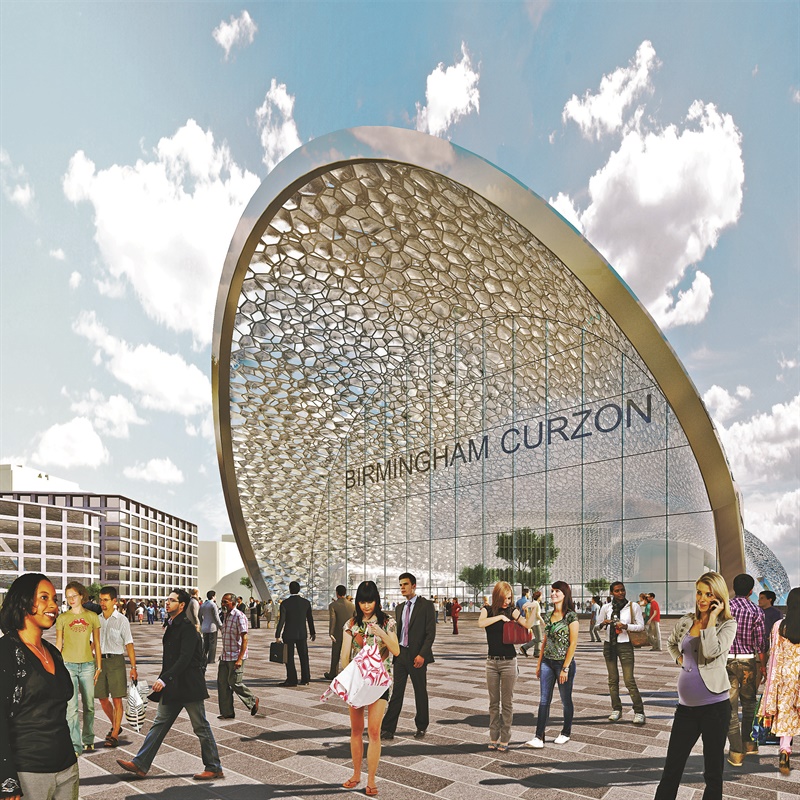15.04.14
International ambitions
Source: Public Sector Executive April/May 2014
Birmingham City Council’s director of planning and regeneration, Waheed Nazir, was the driving force behind the recent Birmingham Curzon HS2 Masterplan, a grand vision of regeneration, connectivity and architectural inspiration for the city’s east side. PSE spoke to him.
HS2 which will be the UK’s biggest infrastructure project, involves a lot of people and affects a lot of people. There are disagreements even among those generally in favour of the new high-speed rail line, including the plans for the planned HS2 terminus in Birmingham city centre at Curzon Street.
The region’s passenger transport executive, Centro, is seeking to lodge a formal appeal against the HS2 Bill in its current format, despite being a strong backer of the scheme in principle, because of the impacts the existing proposals will have on integrated transport in Birmingham and the lack of vision regarding connectivity.
That is also an issue that animates Waheed Nazir, director of planning and regeneration at Birmingham City Council, which in February launched a ‘masterplan’ for the Curzon Street station area, including its own designs for the new HS2 station and onward transport options there, ‘rivalling’ the official ones from HS2 and Arup.
Nazir described the existing HS2 station design proposal, as found in HS2’s phase one environmental statement and accompanying transport assessments, as a “very simple box”, suggesting that HS2’s base budget “will not have the ability to fund a station with a quality of design that we’re talking about”.
Birmingham “will not accept” that design, he told us, and described plans instead to ‘top up’ HS2’s budget to deliver a new station with locally-raised money from the council, businesses and the local enterprise partnership to achieve a station design of “international standard”. This is similar to what happened with the New Street station redevelopment, where Network Rail’s early plans were ‘upgraded’ once the city council and John Lewis came on board as partners.
Discussing the much grander station design envisioned in the masterplan, created by the head of Nazir’s design team, an architect and urban designer by background, he said: “It may not ultimately be delivered exactly as the design we’ve set out, but it has to be something that gets international recognition. This will be an international station, and I’m not happy to accept, Birmingham’s not going to accept, a boxy, standard station which doesn’t meet the international standard we want.
“The architects are my staff, this whole masterplan has been done in-house by the city council, and it’s something I’m very proud of.”
The impressive CGI images are available at PSE's sister site RTM, here.
Nazir said HS2, up until now, has been focused on ensuring the plans for Curzon Street are “technically feasible” – but that it is the city council’s job to help deliver something much more than just what is technically feasible, and something that helps regeneration and growth on the east side of Birmingham.

He said: “HS2 has been involved with our masterplan, which I presented to the HS2 Growth Task Force. It’s music to their ears, to be frank – the opponents of HS2 are very loud. This gives an opportunity for a city to show some leadership and show what HS2 can actually deliver.”
Lord Deighton, Commercial Secretary to the Treasury and chair of the HS2 Growth Taskforce, said: “Birmingham is developing ambitious plans to kick-start development and realise the benefits of HS2. Their vision for the Curzon HS2 Masterplan demonstrates the transformational value of HS2, not just for rail passengers but for the communities that the railway will serve.”
Nazir added: “One key thing, which comes out in the masterplan, is integrating HS2 with the other transport infrastructure. We’ve talked about bringing Metro right down to the station, with a stop inside it. That’s fundamental – you’d literally be able to get off a HS2 train and step onto Metro.”
The draft masterplan covers more than 140ha of the Eastside and Digbeth quarters and the eastern fringe of the city centre core, which its proponents say will unlock major regeneration and growth opportunities that can provide 14,000 (net) jobs, 600,000m sq of new business space, 2,000 new homes and £1.3bn of economic uplift.